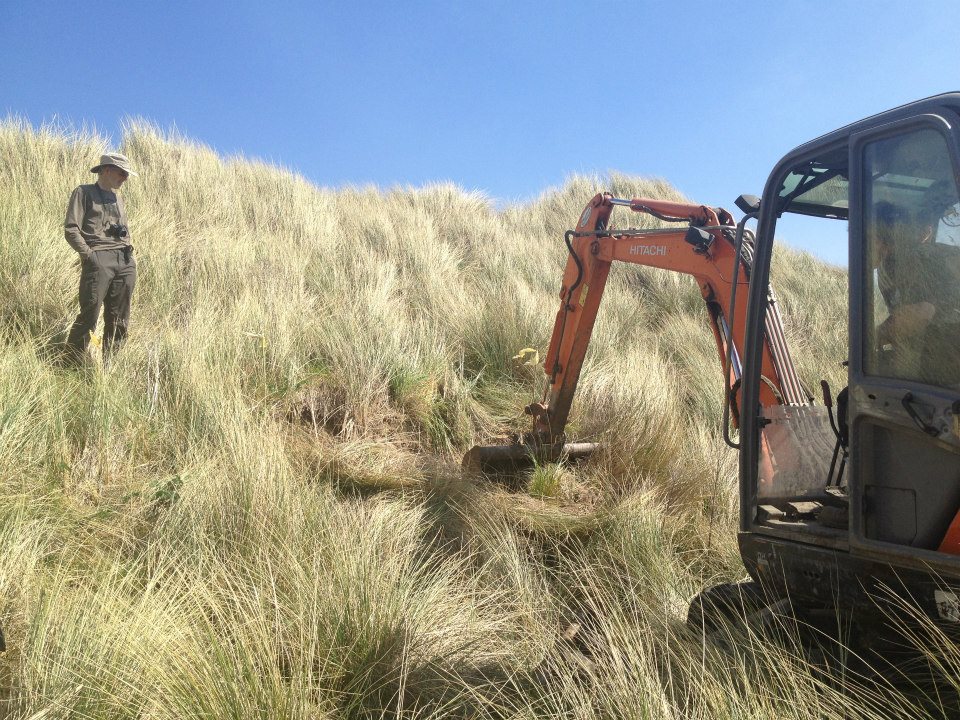News & Events
Latest News
Volunteer Programme April 2019 - September 2019
17.05.2019
Screening For Life Walk 01/07/2015
18.06.2015
Facebook Page
Habitat improvements give rare sand lizards a boost
Date: 14.05.2013
Type: Biodiversity
It might appear drastic, but according to Denbighshire Countryside Service getting a digger onto the sand dunes was the best way to improve the habitat at Gronant Dunes in Prestatyn.
 The site is home to the rarest lizard in the UK, the sand lizard, which needs bare patches of sand to lay its eggs and to bask to gain energy from the sun. But the dunes where they live were becoming overgrown with marram grass and in need of management.
The site is home to the rarest lizard in the UK, the sand lizard, which needs bare patches of sand to lay its eggs and to bask to gain energy from the sun. But the dunes where they live were becoming overgrown with marram grass and in need of management.
On Tuesday 7 May a mini-digger was used to create five bare patches of sand in an area of dune. Denbighshire Countryside Service’s Biodiversity Officer Lizzy Webster said, “We have tried working by hand in the past but this year we needed something more radical. The mini-digger was able to create enough bare sand to make a real difference to the lizards”.
Cllr Huw Jones, Biodiversity Champion for Denbighshire County Council added, “It is great news that these habitat improvements have taken place. It will help to ensure that sand lizards survive in Denbighshire in the long term.”
Sand lizards were reintroduced to Gronant Dunes and to neighbouring Talacre Warren in Flintshire after becoming extinct along the North Wales coast due to habitat loss.



